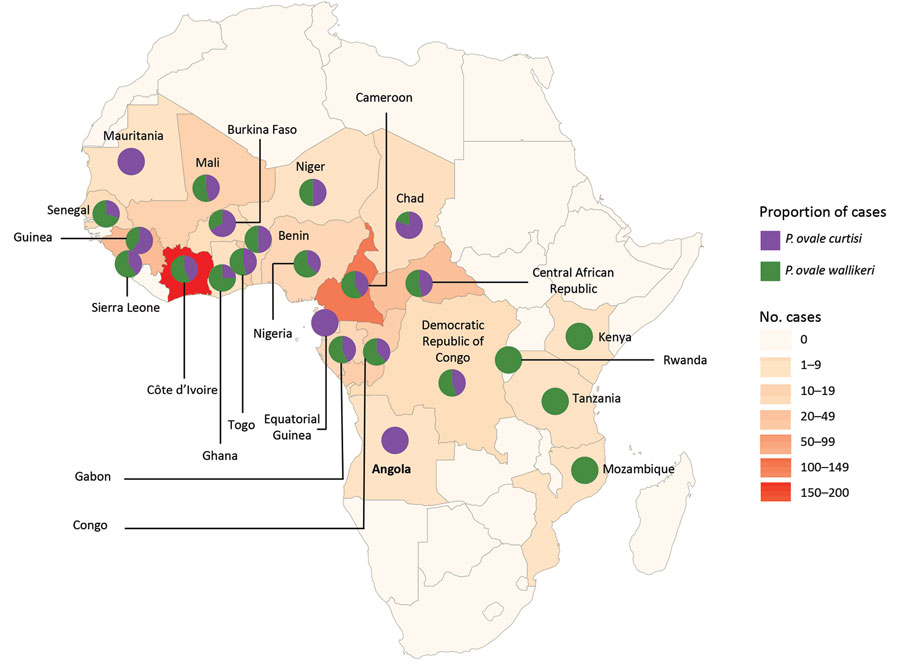Volume 27, Number 2—February 2021
CME ACTIVITY - Synopsis
Plasmodium ovale wallikeri and P. ovale curtisi Infections and Diagnostic Approaches to Imported Malaria, France, 2013–2018
Figure 3

Figure 3. Geographic repartition of the origin countries of imported Plasmodium ovale wallikeri and P. ovale curtisi infection cases into France, January 2013–December 2018. Pie charts showed the repartition of cases between both species in each country.
1Additional members of the French National Reference Center for Imported Malaria Study Group who contributed data are listed at the end of this article.
Page created: January 04, 2021
Page updated: January 21, 2021
Page reviewed: January 21, 2021
The conclusions, findings, and opinions expressed by authors contributing to this journal do not necessarily reflect the official position of the U.S. Department of Health and Human Services, the Public Health Service, the Centers for Disease Control and Prevention, or the authors' affiliated institutions. Use of trade names is for identification only and does not imply endorsement by any of the groups named above.